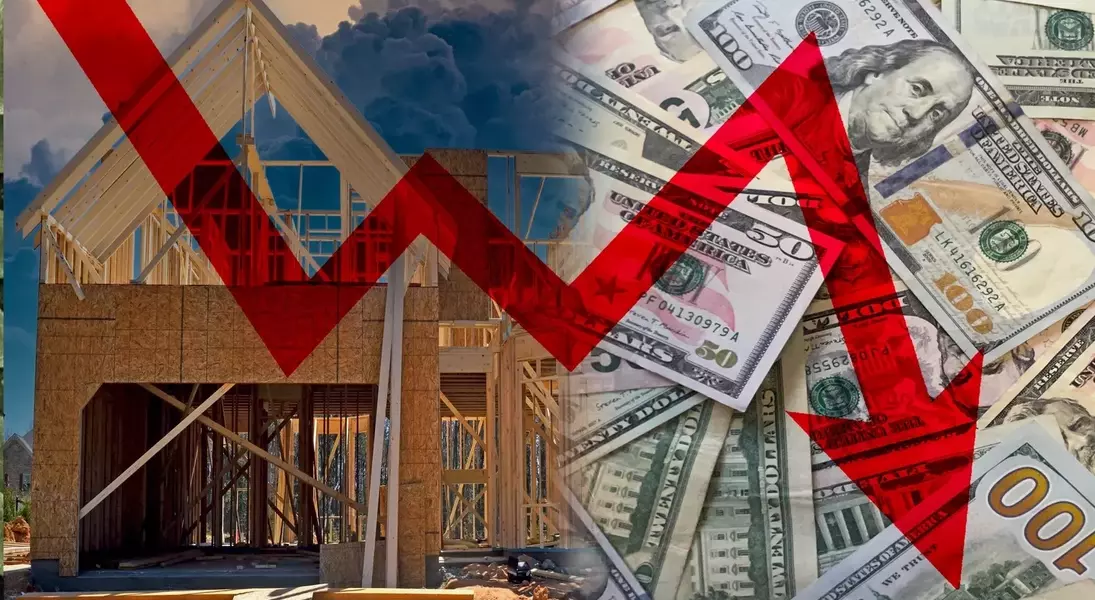
Despite Goldman Sachs' optimistic forecast for a robust housing market rebound by 2026, a closer examination reveals several critical factors that may challenge this projection. The interplay of stagnant existing home sales, elevated mortgage rates, and growing concerns about housing affordability, coupled with a weakening employment landscape, suggests a potentially different trajectory for the real estate sector. This analysis explores the core arguments against Goldman Sachs' positive outlook, highlighting the nuanced economic realities that could lead to declining home prices in the coming years and their broader impact.
The current state of the U.S. housing market presents a complex picture. While existing home sales are at their lowest levels since the mid-1990s and mortgage rates remain stubbornly high, Goldman Sachs anticipates a significant turnaround by 2026. This optimism is primarily anchored in the belief that a substantial "pent-up demand" for housing has accumulated due to a decade-long undersupply of new homes following the Great Financial Crisis. This theory posits that once economic conditions stabilize and interest rates potentially ease, this latent demand will unleash a wave of buying activity, thereby driving up home values.
The Illusion of Pent-Up Demand: Why Housing Affordability Remains a Sticking Point
Goldman Sachs' forecast for a thriving housing market in 2026 hinges on the premise of substantial pent-up demand, attributing it to the curtailed home construction after the 2008 financial crisis. This perspective suggests that an eventual release of this demand will propel home price growth. However, this analysis posits that such a prediction overlooks the critical and ongoing issue of housing affordability, high mortgage rates, and a struggling job market, which together may prevent the anticipated market surge.
The argument for pent-up demand often minimizes the current financial realities faced by potential homebuyers. Despite the perceived shortage of housing, the ability of individuals and families to afford a home remains severely constrained. With existing home sales at their lowest in decades and mortgage rates consistently above 6%, the economic barrier to entry for many is simply too high. Furthermore, a faltering jobs market adds another layer of financial insecurity, making long-term commitments like homeownership a daunting prospect. These persistent affordability challenges are likely to temper any explosive demand, keeping a downward pressure on home prices in 2026 and challenging the optimistic predictions.
Economic Undercurrents: Beyond the Housing Market's Surface
Beyond the immediate dynamics of supply and demand, a confluence of broader economic factors suggests a less rosy future for the housing market. The national economy is grappling with inflation, a cautious Federal Reserve, and a labor market that, while still exhibiting some strength, is showing signs of vulnerability. These macroeconomic currents are likely to impact consumer confidence and spending power, directly influencing the real estate sector.
The lingering effects of inflation, coupled with the Federal Reserve's commitment to controlling it, could mean that high interest rates persist longer than anticipated, further exacerbating the affordability crisis. Additionally, a slowdown or contraction in the jobs market would reduce household incomes and increase economic uncertainty, leading many to postpone or reconsider major purchases like homes. These interconnected economic pressures are not isolated to the housing market but ripple through the entire economy, creating an environment where sustained home price appreciation in 2026 appears increasingly improbable. The interaction of these elements paints a picture where a decline in housing values is not only possible but perhaps an unavoidable adjustment to prevailing economic realities.
